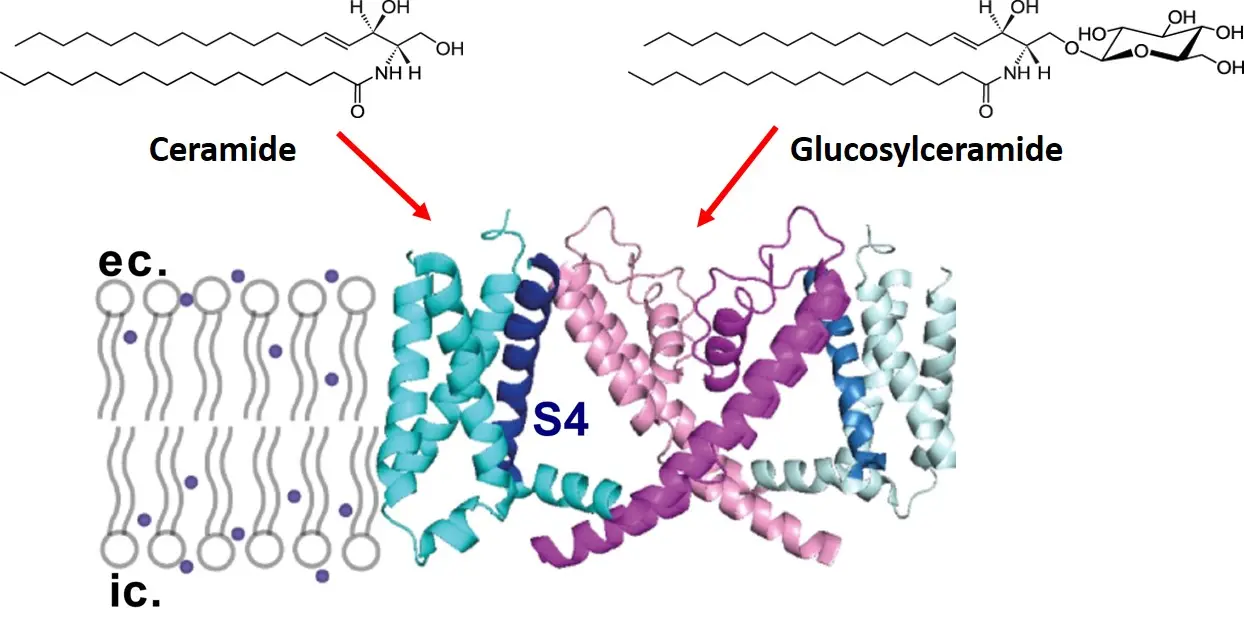
While the modulation of the activation gating of voltage-gated potassium channels (KV) by sterols, phospholipids and fatty acids is extensively documented, much less is known about such effects and action mechanisms of ceramide and glucosylceramide. In their recently published study, Dr. Florina Zakany and her colleagues investigated the effects of these lipids on KV1.3, a functionally relevant ion channel of immune cells, and determined their mechanisms of action including which structural element is the main intramolecular target and whether there is any contribution of indirect, membrane biophysics-related mechanisms to their effects. Using two-electrode voltage-clamp fluorometry capable of recording currents and fluorescence signals to simultaneously monitor movements of the pore domain (PD) and the voltage sensor domain (VSD) of the KV1.3 ion channel, they demonstrated rightward shifts in the conductance-voltage (G-V) relationship, slower current activation kinetics, and reduced current amplitudes in response to increasing the ceramide or glucosylceramide content of the plasma membrane. In their experiments, only ceramide induced a rightward shift in the fluorescence signal-voltage (F-V) relationship and slowed fluorescence activation kinetics, whereas glucosylceramide exerted no such effects. These results suggested that while ceramide primarily targets the VSD, glucosylceramide is only able to influence the PD of KV1.3. When exploring the potential contribution of membrane biophysical effects on the mechanism of action using environment-sensitive probes and fluorescence-based approaches, the authors found that both examined lipids similarly increased molecular order in the inner, hydrophobic regions of bilayers, whereas only ceramide induced a robust molecular reorganization at the membrane-water interface. The authors concluded that this unique ordering effect in the outermost membrane layer in which the main VSD rearrangement involving an outward sliding of the top of S4 occurs explains the VSD targeting mechanism of ceramide, which is unavailable for glucosylceramide.
The study was published in a prestigious international scientific journal, the Journal of Lipid Research.
Bence Cs. Szabo, Mate Szabo, Peter Nagy, Zoltan Varga, Gyorgy Panyi, Tamas Kovacs, Florina Zakany